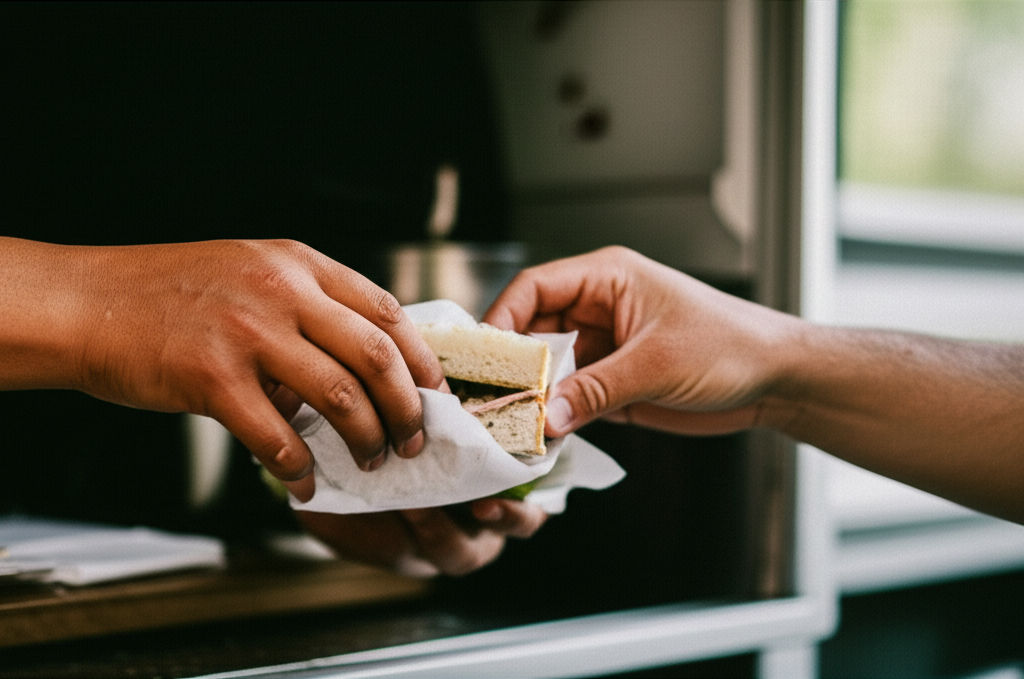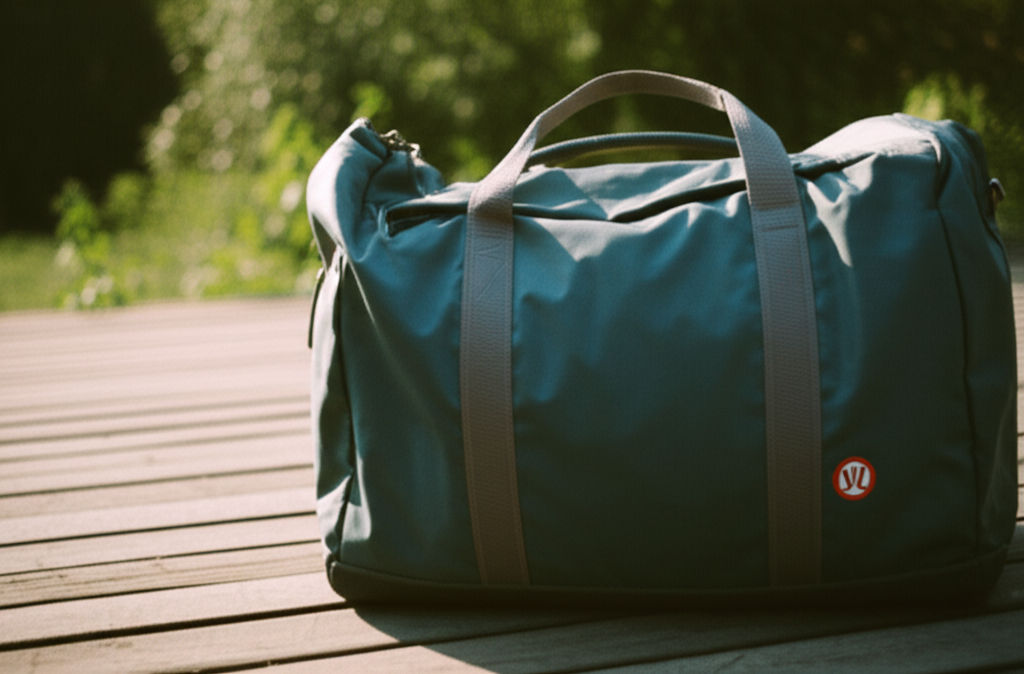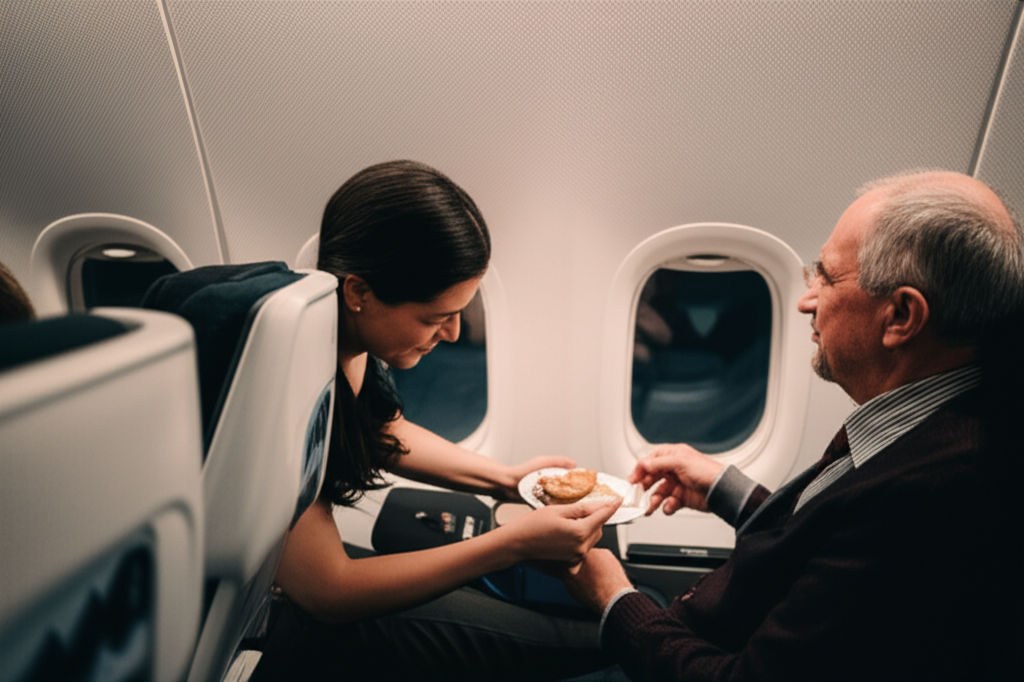Build a Winning Lunch Truck Plan
Ikhsan Rizki

Photo: Ready to launch your lunch truck? Get a winning plan! This guide covers everything from concept to cash flow for a successful mobile food business.
Fuel Your Dreams: How to Build a Winning Lunch Truck Plan
Dreaming of dishing out delicious meals on wheels? The allure of a lunch truck, with its freedom, flexibility, and direct connection to customers, is undeniable. But turning that dream into a profitable reality requires more than just great recipes; it demands a solid strategy. This comprehensive guide will walk you through how to build a winning lunch truck plan, from concept to cash flow, ensuring you're ready to hit the streets with confidence.
Why a Lunch Truck? The Mobile Food Revolution
The food truck industry has experienced significant growth, offering a dynamic alternative to traditional brick-and-mortar restaurants. With lower startup costs and the ability to reach diverse audiences in various locations, a mobile eatery provides a unique opportunity for culinary entrepreneurs. But what makes a food truck truly successful? It's a blend of a unique concept, strategic location, quality food, and efficient operations.
Laying the Foundation: Your Core Concept and Market
Before you even think about a truck, you need a clear vision. What kind of food will you serve? Who are you serving it to?
Define Your Culinary Concept & Niche
This is where your passion meets the market. Will you specialize in gourmet tacos, artisanal sandwiches, classic comfort food, or something entirely unique? A distinctive concept helps you stand out in a crowded market. Keep your menu small and focused initially, allowing you to perfect each dish while ensuring efficient preparation in a compact space.
Understand Your Target Market
Who are your ideal customers? City dwellers on their lunch breaks, festival-goers, or families looking for a quick dinner? Research your local market to identify demand and assess the competition. Are there emerging food trends you can tap into? Are certain areas underserved by existing food trucks? Understanding your target audience's preferences will shape your menu, pricing, and marketing efforts.
Research the Competition
Don't just look at other food trucks; consider local restaurants too. What are they doing well? Where are their weaknesses? Identifying gaps in the market allows you to carve out your unique niche and competitive advantage.
The Blueprint for Success: Crafting Your Business Plan
A robust business plan is the backbone of your lunch truck venture. It's not just for investors; it's your roadmap to success.
Essential Components of Your Lunch Truck Business Plan
Your plan should be comprehensive, covering every aspect of your operation. Key sections include:
- Executive Summary: A concise overview of your entire business, highlighting your concept, goals, and financial projections. Write this last!
- Company Description: Detail your business structure, mission, and what makes your lunch truck unique.
- Market Analysis: Present your research on the food industry, target market demographics, and competitive landscape.
- Menu Offerings: Outline your specific food and beverage items, considering ingredient availability, prep time, and shelf space.
- Marketing & Sales Strategy: How will you reach customers and generate sales? (More on this below!)
- Management Team: Who's running the show? Detail your experience and any key hires.
- Operations Plan: Describe daily operations, from food preparation to service and cleanup.
- Financial Projections: Crucial for understanding profitability. This includes startup costs, operating expenses, and revenue forecasts.
Navigating the Red Tape: Permits, Licenses, and Regulations
This is often the most daunting part, but it's non-negotiable. Regulations vary significantly by city, county, and state.
Key Permits and Licenses You'll Likely Need
While specific requirements differ, expect to secure:
- Business License: A general license to operate any business.
- Mobile Food Unit Permit: Specific to food trucks, ensuring compliance with local food safety and worker standards.
- Public Health Permit/Health Department Certification: Requires your truck to pass thorough inspections for cleanliness, sanitation, and food safety. This is often a recurring requirement.
- Food Manager & Food Handler Certificates: At least one employee, often the owner, needs a certified food safety manager certificate, and all food-handling staff typically need food handler cards.
- Sales Tax Permit: Allows you to legally collect sales tax.
- Vehicle Registration & Commercial Auto Insurance: Your truck is a commercial vehicle and needs appropriate registration and insurance.
- Fire Safety Certificate: Some jurisdictions require permits from fire departments.
- Location Permits & Parking Rules: You'll need to know where you can legally park and operate, and some locations or events may require specific permits or fees.
Always check with your local health department and city/county business licensing offices for the exact requirements in your area.
The Star of the Show: Your Lunch Truck
The truck itself is your mobile kitchen and storefront. Decisions here impact your budget and operational efficiency.
New vs. Used vs. Custom Build
- New: Offers reliability and customization from the start, but comes with a higher price tag, typically $50,000 to $150,000 for a fully equipped truck.
- Used: A more budget-friendly option, ranging from $20,000 to $80,000, but may require repairs or customization.
- Custom Build: If you're ambitious, you can convert a truck or trailer. This involves significant work on electrical, plumbing, and kitchen configuration, potentially adding $50,000 to $200,000 to the truck cost.
Layout and Equipment Essentials
Your truck's interior needs to be a highly efficient kitchen. Consider:
- Cooking Equipment: Grills, fryers, ovens, depending on your menu.
- Refrigeration & Storage: Adequate space for ingredients and prepared food.
- Prep Stations: Counter space for food preparation.
- Sinks: Typically a multi-compartment sink for washing, rinsing, and sanitizing, plus a handwashing sink.
- Generator/Power System: To run all your equipment.
- Ventilation: Proper airflow is critical for a safe and comfortable working environment.
- POS System: A reliable point-of-sale system for efficient order taking and payment processing.
Remember that all equipment may need to be NSF-rated to pass health inspections.
On the Road: Operations and Logistics
Efficient operations are key to profitability.
Sourcing Ingredients
Establish reliable relationships with suppliers for fresh, quality ingredients. Managing food costs is crucial for a healthy profit margin.
Staffing Your Lunch Truck
Will you operate solo or hire a small team? Consider roles like cook, cashier, and prep staff. Optimize labor costs by scheduling efficiently and leveraging technology like online ordering.
Location, Location, Location!
Unlike a fixed restaurant, your location can change daily. Research high-traffic areas, business districts, parks, festivals, and community events. Partnerships with local businesses can also bring more foot traffic. Use social media to announce your daily location.
Daily Operations
From morning prep in a commissary kitchen (often required for food trucks to store and prepare food off-truck) to serving customers and evening cleanup, streamline your processes for maximum efficiency.
Spreading the Word: Marketing Your Mobile Eatery
Even with the best food, people need to know where to find you.
Branding That Pops
Your truck's appearance is your most visible marketing tool. Invest in eye-catching branding, from your truck wrap to your menu board and packaging. Make sure passersby can immediately understand what you're selling.
Social Media Savvy
Social media is indispensable for food trucks.
- Platforms: Focus on visual platforms like Instagram and TikTok to showcase your food.
- Updates: Post daily updates on your location, menu, and specials.
- Engagement: Interact with customers, run contests, and encourage user-generated content.
Local Events and Catering
Participating in festivals, music events, and community gatherings can significantly boost your visibility and customer base. Offering catering services can also provide a stable revenue stream.
Loyalty Programs and Promotions
Encourage repeat business with loyalty programs, discounts, and special offers. Consider "Happy Hour" pricing during slower periods.
Conclusion: Your Journey to Lunch Truck Success
Building a winning lunch truck plan is an exciting journey that combines culinary passion with smart business strategy. From refining your concept and drafting a comprehensive business plan to navigating permits, outfitting your truck, and executing a dynamic marketing strategy, each step is crucial. The food truck industry offers immense potential for those willing to plan meticulously and adapt to challenges.
Are you ready to turn your culinary dreams into a mobile reality? What's the first step you'll take to build a winning lunch truck plan? Share your thoughts and questions in the comments below!
Frequently Asked Questions (FAQ)
Q1: How much does it typically cost to start a lunch truck business?
A1: The startup costs for a food truck can vary widely, but generally range from $50,000 to $150,000, with some estimates going up to $300,000. This includes the cost of the truck itself (new or used), kitchen equipment, permits, licenses, insurance, and initial inventory.
Q2: What are the most important permits and licenses needed for a food truck?
A2: While requirements vary by location, essential permits and licenses typically include a general business license, a mobile food unit permit, a public health permit (requiring health inspections), food handler certifications, a sales tax permit, and commercial vehicle registration and insurance. Always consult your local and state authorities for specific regulations.
Q3: How can I effectively market my new lunch truck?
A3: Effective marketing for a lunch truck involves creating a strong, eye-catching brand for your truck, leveraging social media (especially visual platforms like Instagram and TikTok) for daily location updates and engagement, participating in local festivals and events, and offering loyalty programs or promotions. Collaborating with other local businesses can also expand your reach.
Q4: Is it better to buy a new or used food truck?
A4: The choice between a new and used food truck depends on your budget and needs. New trucks offer reliability and customization but are more expensive ($50,000-$150,000). Used trucks are more affordable ($20,000-$80,000) but may require additional investment in repairs or upgrades. A custom build can be even more costly, potentially adding $50,000-$200,000 for equipment and installation.
Business
View All
November 19, 2025
Why Deloitte Is Laying Off ConsultantsUnderstand why Deloitte is laying off consultants. Economic headwinds, post-pandemic overhiring, and shifting client needs are key factors.
Ikhsan Rizki

August 11, 2025
Review of HON Office FurnitureChoosing office furniture? Our HON review covers reliability, affordability, and who it's best for, helping you pick the right fit for your workspace.
Ikhsan Rizki

August 31, 2025
Best Ways to Find Costco Coupons in 2025Unlock maximum Costco savings in 2025! Discover how to find Instant Savings, use the app, and get email deals for ultimate discounts.
Ikhsan Rizki

November 5, 2025
Virginia Business Search Made EasyUnlock Virginia business info effortlessly! Our guide simplifies SCC searches for name availability, due diligence, and company details. Get reliable results.
Ikhsan Rizki

August 14, 2025
Business Lessons from Busy SpiderUnravel the secrets of success! Discover how a spider's strategic web design, persistence, and efficiency can transform your business.
Ikhsan Rizki

September 10, 2025
How to Style a Risky Business OutfitElevate your office style! Master the "risky business outfit," balancing professionalism with a confident, fashion-forward edge.
Ikhsan Rizki
Economy
View AllUnpack "full employment" beyond zero unemployment. Discover its true meaning, impact on the economy, and how it shapes policy. Master key economic concepts.
Ikhsan Rizki
Decatur, GA on a budget? Learn strategies to find an affordable, quality hotel stay. Enjoy your trip without sacrificing comfort or location!
Ikhsan Rizki
Find comfortable, clean, and affordable economy lodges for your next trip. Our guide helps you discover budget-friendly stays near you!
Ikhsan Rizki
Unlock motivation with the power of token economies! Learn the psychology behind this system to drive positive behavior and achieve goals.
Ikhsan Rizki
Upgrade your long-haul flight! Discover ITA Airways Premium Economy: enhanced comfort, more space, and amenities without the business class price tag. Is it for...
Ikhsan Rizki
Is Singapore Airlines Economy a cut above? Uncover its premium comfort, world-class entertainment, and renowned service in this guide.
Ikhsan Rizki
Education
View AllMaster "Physical Education" in Spanish! This guide covers "Educación Física," "EF," and regional variations like "Gimnasia." Speak confidently!
Read MoreDiscover special education teacher salaries! Learn national averages, key influencing factors, and strategies to boost your income in this rewarding career.
Read MoreUncover the UGA Marine Center in Savannah, GA. Dive into groundbreaking marine research, education, and conservation protecting Georgia's coast.
Read MoreEmpower your child's special education journey. An IEE offers an unbiased second opinion to ensure their needs are truly met.
Read MoreShape the future of education! Explore Director of Education jobs, key responsibilities, and career paths for experienced leaders.
Read MoreUnpack why Democratic AGs are suing the Education Dept. Learn the key issues, from student loans to policy, and their impact on American education.
Read MoreHealth
View All
September 24, 2025
Pueblo Community Health ServicesDiscover Pueblo Community Health Services (PCHS): accessible, comprehensive medical, dental, & behavioral health for all in Pueblo. Your guide to quality care.
Ikhsan Rizki

August 24, 2025
LifeStance Health Reviews TodayConsidering LifeStance Health? Get real patient insights. Explore services, reviews, and tips to decide if this mental health platform is right for you.
Ikhsan Rizki

November 6, 2025
Ponce Health Sciences University InfoPonce Health Sciences University (PHSU): A distinguished choice for health education, offering diverse programs, cutting-edge research & community focus.
Ikhsan Rizki

November 29, 2025
San Jose Behavioral ServicesSan Jose behavioral services: Your guide to mental wellness in Silicon Valley. Find local support & thrive amidst life's pressures.
Ikhsan Rizki

October 26, 2025
Follow My Health Northwell Login TipsGet seamless access to your Follow My Health Northwell patient portal. Our guide offers tips to resolve login issues and manage your health records with ease.
Ikhsan Rizki

August 24, 2025
Top 25 Health Science Jobs for 2025Unlock your future! Discover the top 25 in-demand health science jobs for 2025. Find a fulfilling and stable career in healthcare.
Ikhsan Rizki
Popular Articles
View All
1
2
3
4
5
6
7
8
9
10
Lifestyle
View All
November 2, 2025
What is HM Lifestyle on your credit card
Mysterious "HM Lifestyle" charge on your card? Unravel what it means, from H&M purchases to potential fraud, and how to investigate.

September 18, 2025
Life With a Five Million Dollar Net Worth
Ever wonder what life with $5M net worth is *really* like? Uncover the true realities, responsibilities, and financial freedom beyond the luxury.

November 24, 2025
Inside Red Monkey Lifestyle Brand
Red Monkey Lifestyle Brand: Authentic rock & roll style handcrafted in America. Unique, vintage-inspired accessories for those who stand out.

October 1, 2025
The Passage Hotel Is a Must Stay
The Passage Hotel Basel: Your must-stay destination for luxury, comfort, and an unbeatable city center location. Unforgettable travel awaits!

August 13, 2025
Manchester Adult Lifestyle Overview
Unlock your best life in Manchester! This guide covers top neighborhoods, career insights, leisure, and community to help you thrive in this vibrant city.

October 8, 2025
Bose Model 5 Music System
Explore the Bose Model 5 Music System. Get immersive, room-filling sound from a sleek, compact home audio solution. Rediscover your music!

November 8, 2025
Inside the world of Lifestyle Inc
Explore "Lifestyle Inc," the vast ecosystem shaping modern life. Understand its influence, make mindful choices, and take control of your well-being.

November 18, 2025
Are Lifestyles Prices Worth It
Are your lifestyle choices worth the cost? Decode "lifestyle prices" to ensure you're getting true value from your spending.
Sports





Travel
View All
October 31, 2025
Tex Best Travel Center Roadside Stop
Find the perfect pit stop in Texas! Tex Best Travel Center offers clean restrooms, diverse fuel, and food to redefine your road trip experience.

October 4, 2025
EOS Vanilla Cashmere Hand Cream Travel Size
Banish dry travel hands! Get soft, hydrated skin on the go with EOS Vanilla Cashmere Hand Cream Travel Size. Your compact hydration secret.

September 27, 2025
Prayer for Safe Travel
Find peace and protection for your journey. Discover how a powerful prayer for safe travel can reduce anxiety and bring divine peace of mind.

August 5, 2025
Direct Line travel insurance
Direct Line travel insurance: No new policies. Existing customer? This guide helps you manage your policy, understand coverage, & navigate claims.

October 4, 2025
Fellow Travelers Book on Love and Politics
Discover Thomas Mallon's "Fellow Travelers," a poignant novel masterfully intertwining forbidden love with McCarthy-era political paranoia.

November 7, 2025
Lululemon Travel Bag for Active Lifestyles
Elevate your active travel! Find the ultimate Lululemon bag for seamless organization, durability, and style on all your adventures.

















